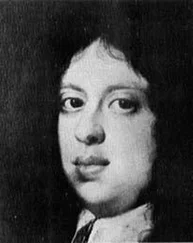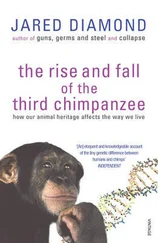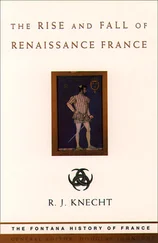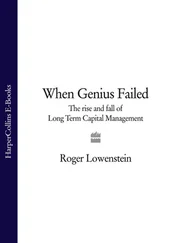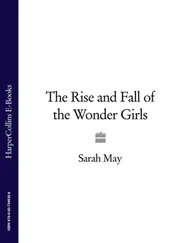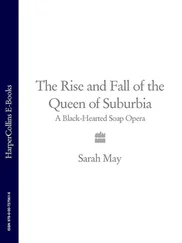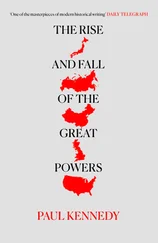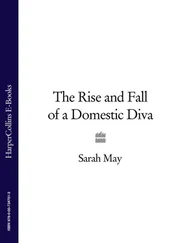At the Council of Constance, however, the Medici suffered a setback. Pope John arrived at Constance at the end of October 1414 to find himself accused of all kinds of crimes including heresy, simony, tyranny, the murder by poison of Alexander V and the seduction of no fewer than two hundred of the ladies of Bologna. After escaping from Constance disguised as a layman with a cross-bow slung over his shoulder, he was betrayed and brought back to face the Council, which deposed both him and Benedict XIII, accepted the resignation of Gregory XII, and elected a new pope, Martin V.
Pope John, ill and destitute, was held prisoner for three years in the Castle of Heidelberg until the Medici once more came to his help by arranging, through their Venetian branch, to pay a ransom for his release of 38,500 Rhenish gulden. Accompanied by Bartolomeo de’ Bardi (soon to become the Medici’s manager in Rome), the deposed Pope made his way to Florence where Giovanni de’ Medici welcomed him, provided him with a home for the remaining few months of his life, and interceded on his behalf with Martin V, who agreed to appoint him Cardinal-Bishop of Tusculum.
Martin V was then also living in Florence where he remained for two years at the monastery of Santa Maria Novella. 6He was a gentle, simple man, but his relations with the Medici were not as close and friendly as Giovanni would have liked. There was trouble over a pearl-encrusted mitre which had come into Medici hands at the time of Pope John’s flight from Constance and which was only returned to the papal chancellor after Giovanni had been threatened with excommunication. There was trouble, too, over Pope John’s will, under the terms of which the Medici received a finger of St John the Baptist which the testator, whose trust in relics was unbounded, had carried with him always. Later there was a quarrel over Pope John’s tomb in the Baptistery, which contained upon its base the words ‘ Ioannes Quondam Papa XXIII ’, an inscription which Pope Martin V considered an affront to his own authority.
On 9 September 1420 Pope Martin left Florence for Rome accompanied by twelve cardinals. An immense procession of the city’s officials, representatives of the guilds and the colleges, and uniformed standard-bearers escorted him to the Porta di San Pier Gattolini where he gave them all his apostolic blessing. He then rode out of the city to the convent of San Gaggio. Here ‘he got down from his horse’, so a contemporary chronicler reported, ‘and asked for all the nuns of the convent to be brought before him. He blessed them one after the other and kissed them on the forehead over their veils.’
Giovanni de’ Medici, who had accompanied the procession as one of the four Cavalieri , those honoured citizens of Florence who had the right to wear golden spurs, watched him depart and cannot have felt other than concerned that his bank’s relationship with the Papacy had become so strained. The Medici were not entirely excluded from curial business, but they no longer enjoyed the special privileges they had had in the time of Pope John XXIII. Now it was their ancient rivals, the Spini, who were favoured by the Papal Chamber. 7But towards the end of 1420 the Spini company suddenly failed and were forced into bankruptcy. Soon afterwards the Medici manager in Rome took over their business, and his bank recovered its former position. Within a few years, indeed, the Medici bank became not only the most successful commercial enterprise in Italy, but the most profitable family business in the whole of Europe. For this as much credit was due to the elder son as to the father.
Cosimo had been born on 27 September 1389, the day upon which are commemorated the early Christian martyrs, Cosmas and Damian, the patron saints of physicians, whom he was often to have introduced into paintings commissioned by him or painted in his honour. He had received his early education at the school of the Camaldolese monastery of Santa Maria degli Angeli, where he had begun to learn German and French as well as Latin and a smattering of Hebrew, Greek and Arabic. 8Later, together with the young sons of other rich Florentine families, he had attended the lectures and lessons of Roberto de’ Rossi, one of the leading scholars of the day and himself a member of an old and wealthy Florentine family. Under Roberto de’ Rossi’s enlightened guidance, and thereafter in discussion groups at the Santa Maria degli Angeli monastery which he continued to attend in his middle age, Cosimo acquired and developed that deep respect for classical learning and classical ideals, combined with an interest in man’s life on earth which was to remain with him for ever. He became, in fact, a humanist.
He was not as learned as many other humanists in his circle, though Pope Pius II, who had a very low opinion of Florentines in general, condemning them as ‘traders, a sordid populace who can be persuaded to nothing noble’, allowed that Cosimo was a highly cultured, clever and knowledgeable man, ‘more lettered than merchants are wont to be’. Certainly there were few Florentine humanists with a wider knowledge of classical manuscripts which he began to collect at an early age, and there were scarcely any who were more intensely concerned with the importance of humanistic ideals in the conduct of public life. Although he himself never became a master of those arts and disciplines, such as rhetoric, which the humanist was taught to practise, he never questioned the right of those who did master them to occupy the most honoured positions in Florentine society. Most of them, after all, came from the same sort of background as himself. But in one important respect Cosimo was different, as his father had always urged him to be, from most of the humanists of Florence: he seemed anxious to remain, as far as possible, out of the public eye.
He was rarely to be seen walking the streets of the city, never with more than one servant in attendance, and always quietly dressed, scrupulous in giving the wall to older citizens and ‘showing the utmost deference to the magistrates’. He left it to the scions of other rich families to play the parts of paladins: at a big tournament in the Piazza Santa Croce in 1428, 9when Lorenzo, son of the great Palla Strozzi, 10won the victor’s laurels, Cosimo was not even mentioned as having been present, nor was any other member of his family. When people came to him for help or to ask his advice about some business matter, he would listen to them carefully and quietly and then tell them what he thought in a few, short words, almost brusquely, as though unwilling to commit himself to friendship. Ordinary people liked him, though, and trusted him; and, even in later years, when age had withered his sallow features giving them a sardonic twist, when his curt and often ambiguous observations assumed an increasingly sarcastic and derisive note, there was something in his manner that commanded affection rather than awe.
He was still in his early twenties when he married Contessina de’ Bardi, eldest daughter of Giovanni de’ Bardi, one of his father’s partners in the Rome branch of their bank. The Bardi were an old Florentine family and had once been immensely rich; but, like the Peruzzi and Acciaiuoli families, they had lent far more than was ever repaid to various rulers, including King Edward III of England and Robert, the Angevin King of Naples, so that they had consequently fallen on hard times. The dowry which Contessina was able to bring to her husband was therefore not a large one, although it included the Palazzo Bardi, the family palace in the Via de’ Bardi, a street whose houses had once all belonged to her family. 11She and Cosimo moved into the palace, whose rooms were soon unobtrusively decorated with the Medici insignia; and it was here that their first child, Piero, was born – in accordance with the hopes of a well-wisher who had written to Cosimo, ‘God preserve you and arrange that the first night you sleep with your noble and illustrious wife, you may conceive a male child.’
Читать дальше

